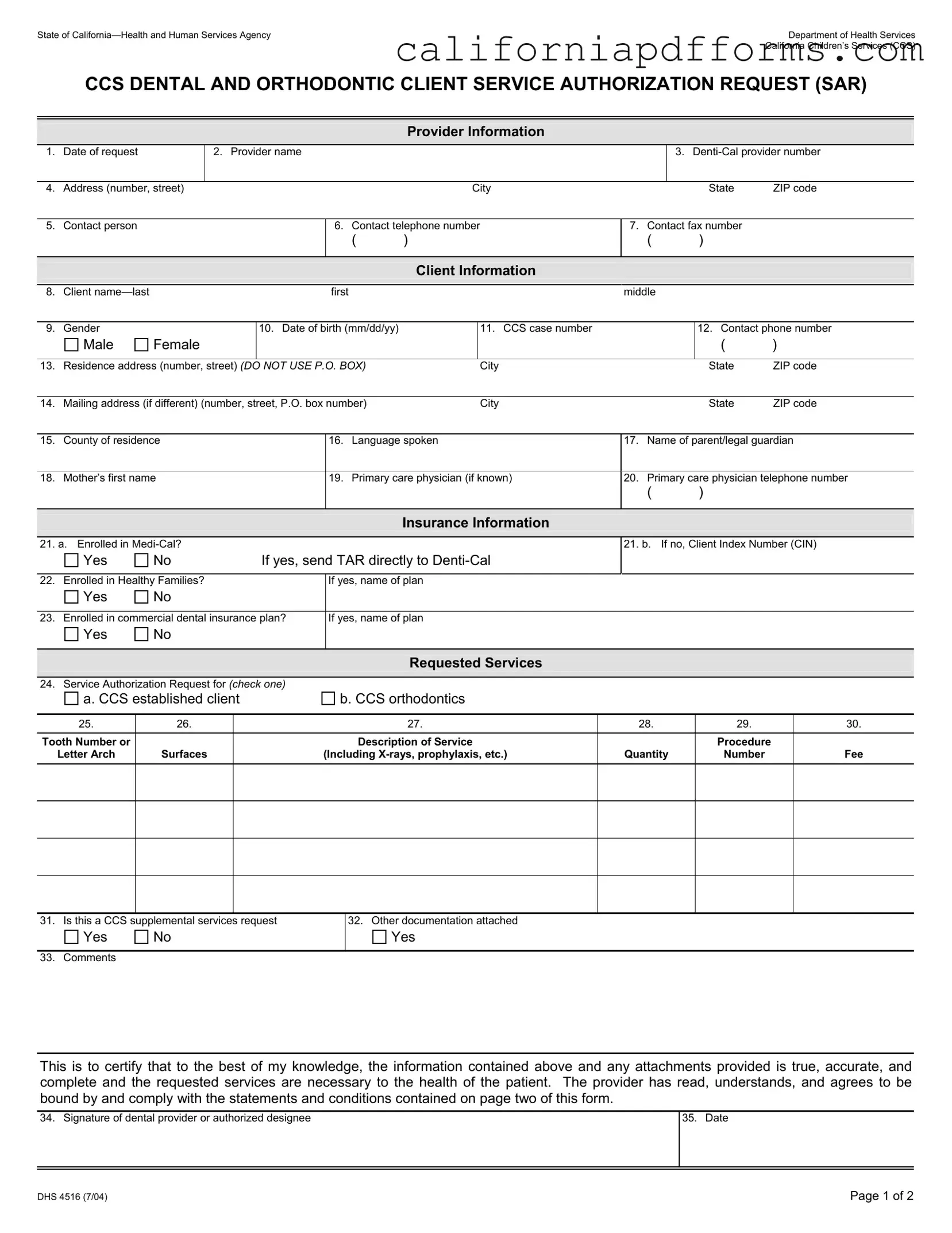Understanding the California DHS 4516 form is essential for providers and clients alike. However, several misconceptions can lead to confusion. Here are ten common misunderstandings about this form:
- Misconception 1: The form is only for orthodontic services.
In reality, the California DHS 4516 form is used for various dental services, not just orthodontics. It covers a range of client service authorization requests.
- Misconception 2: Only Medi-Cal enrolled clients can use this form.
While the form is designed with Medi-Cal clients in mind, it can also be utilized by clients with other insurance plans, including Healthy Families and commercial dental insurance.
- Misconception 3: The form must be submitted in person.
This is incorrect. Providers can submit the form via fax or mail, making it convenient for both parties.
- Misconception 4: All fields on the form are optional.
Many fields are mandatory, particularly those related to client information and requested services. Incomplete forms may lead to delays or denials.
- Misconception 5: The form does not require a signature.
A signature from the dental provider or authorized designee is essential. This certifies the accuracy of the information provided.
- Misconception 6: The form can be submitted without supporting documentation.
While not all requests require additional documentation, any necessary attachments should be included to avoid processing issues.
- Misconception 7: The form is only for children.
The California DHS 4516 form can be used for clients of all ages, as long as they meet the criteria for the services requested.
- Misconception 8: The request will be automatically approved.
Approval is not guaranteed. Each request is subject to review based on the information provided and the necessity of the services.
- Misconception 9: The form has a long processing time.
Processing times can vary, but many requests are handled efficiently. Timely and complete submissions can expedite the process.
- Misconception 10: The form is the same for all types of dental services.
Different types of services may require different forms or additional information. It is crucial to ensure that the correct form is used for the specific request.
